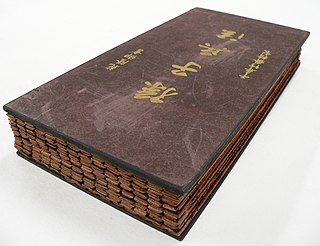 W
WThe Art of War is an ancient Chinese military treatise dating from the Late Spring and Autumn Period. The work, which is attributed to the ancient Chinese military strategist Sun Tzu, is composed of 13 chapters. Each one is devoted to a different set of skills related to warfare and how it applies to military strategy and tactics. For almost 1,500 years it was the lead text in an anthology that was formalized as the Seven Military Classics by Emperor Shenzong of Song in 1080. The Art of War remains the most influential strategy text in East Asian warfare and has influenced both Far Eastern and Western military thinking, business tactics, legal strategy, lifestyles and beyond.
 W
WThe Book of Five Rings is a text on kenjutsu and the martial arts in general, written by the Japanese swordsman Miyamoto Musashi around 1645. There have been various translations made over the years, and it enjoys an audience considerably broader than only that of martial artists and people across East Asia: for instance, some foreign business leaders find its discussion of conflict and taking the advantage to be relevant to their work in a business context. The modern-day Hyōhō Niten Ichi-ryū employs it as a manual of technique and philosophy.
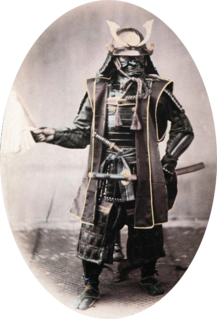 W
WBushidō is a moral code concerning samurai attitudes, behavior and lifestyle. It is loosely analogous to the European concept of chivalry. There are multiple Bushido types which evolved significantly through history. Contemporary forms of bushido are still used in the social and economic organization of Japan. Bushido is best used as an overarching term for all the codes, practices, philosophies and principles of samurai culture.
 W
WBushido: The Soul of Japan is a book written by Inazō Nitobe exploring the way of the samurai. It was published in 1899.
 W
WIn the United States, a Cadet Honor Code is a system of ethics or code of conduct applying to cadets studying at military academies. These codes exist at the federal service academies, such as the United States Military Academy and the United States Air Force Academy and at the senior military colleges, as well as other military schools and colleges. The United States Naval Academy and United States Coast Guard Academy have a related standard, known as the Honor Concept.
 W
WAmong the Plains Indians of North America, counting coup is the warrior tradition of winning prestige against an enemy in battle. It is one of the traditional ways of showing bravery in the face of an enemy and involves shaming him, and, it is hoped, persuading him to admit defeat, without having to kill him. These victories may then be remembered, recorded, and recounted as part of the community's oral, written, or pictorial histories.
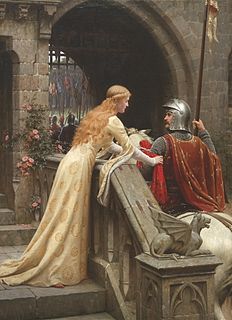 W
WCourage is the choice and willingness to confront agony, pain, danger, uncertainty, or intimidation. Valour is courage or bravery, especially in battle.
 W
WThe Culture of the Russian Armed Forces is widely varied, but unique amongst the branches of the armed forces, and shared with the other uniformed organizations within Russia. Military culture is the most important component of military life. The major cultural events held by the Russian military are primarily aimed at strengthening esprit de corps as well as advancing the historical traditions of the Armed Forces of Russia. The Ministry of Defence of Russia regularly holds cultural events at various levels. The central cultural institutions of the Ministry of Defense of the Russian Federation are actively working in all military districts.
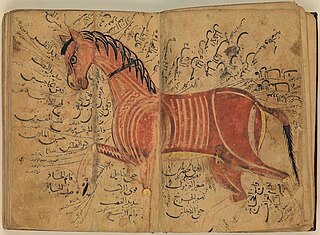 W
WFurūsiyya is the historical Arabic term for equestrian martial exercise. Furūsiyya as a science is especially concerned with the martial arts and equestrianism of the Golden Age of Islam and the Mamluk period, reaching its peak in Mamluk Egypt during the 14th century.
 W
WHagakure, or Hagakure Kikigaki (葉隠聞書), is a practical and spiritual guide for a warrior, drawn from a collection of commentaries by the clerk Yamamoto Tsunetomo, former retainer to Nabeshima Mitsushige, the third ruler of what is now Saga Prefecture in Japan. Tashiro Tsuramoto compiled these commentaries from his conversations with Tsunetomo from 1709 to 1716; however, it was not published until many years afterwards. Written during a time when there was no officially sanctioned samurai fighting, the book grapples with the dilemma of maintaining a warrior class in the absence of war and reflects the author's nostalgia for a world that had disappeared before he was born. Hagakure was largely forgotten for two centuries after its composition, but it came to be viewed as the definitive guide of the samurai during the Pacific War. Hagakure is also known as The Book of the Samurai, Analects of Nabeshima or Hagakure Analects.
 W
WHonour or honor is the idea of a bond between an individual and a society as a quality of a person that is both of social teaching and of personal ethos, that manifests itself as a code of conduct, and has various elements such as valour, chivalry, honesty, and compassion. It is an abstract concept entailing a perceived quality of worthiness and respectability that affects both the social standing and the self-evaluation of an individual or institution such as a family, school, regiment or nation. Accordingly, individuals are assigned worth and stature based on the harmony of their actions with a specific code of honour, and the moral code of the society at large.
 W
WThe Imperial Rescript to Soldiers and Sailors was the official code of ethics for military personnel, and is often cited along with the Imperial Rescript on Education as the basis for Japan's pre-World War II national ideology. All military personnel were required to memorize the 2700 kanji document.
 W
WThe Jixiao Xinshu or New Treatise on Military Efficiency is a military manual written during the 1560s and 1580s by the Ming dynasty general Qi Jiguang. Its primary significance is in advocating for a combined arms approach to warfare using five types of infantry and two type of support. Qi Jiguang separated infantry into five separate categories: firearms, swordsmen, archers with fire arrows, ordinary archers, and spearmen. He split support crews into horse archers and artillery units. The Jixiao Xinshu is also one of the earliest existing East Asian texts to address the relevance of Chinese martial arts with respect to military training and warfare. Several contemporary martial arts styles of Qi's era are mentioned in the book, including the staff method of the Shaolin temple.
 W
WKhalsa refers to both a community that considers Sikhism as its faith, as well as a special group of initiated Sikhs. The Khalsa tradition was initiated in 1699 by the Tenth Guru of Sikhism, Guru Gobind Singh. Its formation was a key event in the history of Sikhism. The founding of Khalsa is celebrated by Sikhs during the festival of Vaisakhi.
 W
WA pirate code, pirate articles, or articles of agreement were a code of conduct for governing pirates. A group of sailors, on turning pirate, would draw up their own code or articles, which provided rules for discipline, division of stolen goods, and compensation for injured pirates.
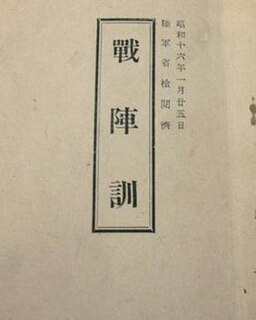 W
WThe Instructions for the Battlefield was a pocket-sized military code issued to soldiers in the Imperial Japanese forces on 8 January 1941 in the name of then-War Minister Hideki Tojo. It was in use at the outbreak of the Pacific War.
 W
WThe Soldier's Creed is a standard by which all United States Army personnel are expected to live. All U.S. Army enlisted personnel are taught the Soldier's Creed during basic training, and recite the creed in public ceremonies at the conclusion of training. Both the Soldier's Creed and the Noncommissioned Officer's Creed are required knowledge at enlisted promotion boards to compete for the rank of sergeant and above, as well as 'Soldier of the Month' boards. It is also common practice to recite the Soldier's Creed at the graduation ceremony from Army ROTC. Unlike the U.S. Uniformed Services Oath of Office or the Oath of Enlistment, the Soldier's Creed is not a legally-binding oath and can be affirmed by both commissioned officers and enlisted soldiers.
 W
WDuring the Middle Ages, Medieval Europe was engaged in constant warfare. European warfare during the Middle Ages was marked by a transformation in the character of warfare from antiquity, changing military tactics, and the role of cavalry and artillery. In addition to military, tactical and technological innovations during this period, chivalric military and religious ideals arose, giving motivation for engagement in the ceaseless warfare. In the Iberian Peninsula, chivalric ideals and institutions would be adopted and exercised with more fervour than anywhere else.
 W
WThe Spartan army stood at the center of the Spartan state, citizens trained in the disciplines and honor of a warrior society. Subjected to military drills since early manhood, the Spartans became one of the most feared and formidable military forces in the Greek world, attaining legendary status in their wars against Persia. At the height of Sparta's power – between the 6th and 4th centuries BC – other Greeks commonly accepted that "one Spartan was worth several men of any other state."
 W
WSun Bin's Art of War is an ancient Chinese classic work on military strategy written by Sun Bin, a supposed descendant of Sun Tzu who served as a military strategist in the Qi state during the Warring States period. According to historical records from the Han Dynasty, Sun Bin's Art of War contained an extensive 89 chapters, with four volumes of pictures attached, but was lost by the end of the Eastern Han Dynasty. As a result, Sun Bin's Art of War is sometimes confused with Sun Tzu's The Art of War.
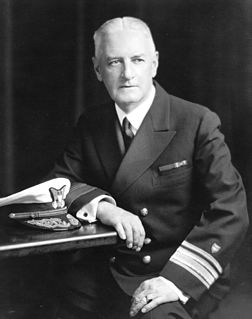 W
WThe Creed of the United States Coast Guardsman was written in 1938 by Vice Admiral Harry G. Hamlet, who served as Commandant of the Coast Guard from 1932 to 1936. According to former Commandant Robert Papp, the Creed described the duties and responsibilities that binds the group of Coast Guardsmen together as "shipmates".
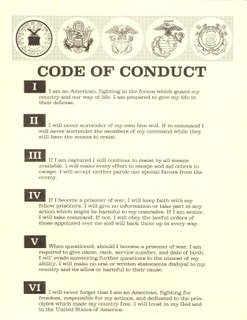 W
WThe Code of the U.S. Fighting Force is a code of conduct that is an ethics guide and a United States Department of Defense directive consisting of six articles to members of the United States Armed Forces, addressing how they should act in combat when they must evade capture, resist while a prisoner or escape from the enemy. It is considered an important part of U.S. military doctrine and tradition, but is not formal military law in the manner of the Uniform Code of Military Justice or public international law, such as the Geneva Conventions.
 W
WA warrior is a person specializing in combat or warfare as an institutionalized or professionalized career, especially within the context of a tribal or clan-based warrior culture society that recognizes a separate warrior aristocracies, class, or caste.
 W
WThe Yijin Jing is a manual containing a series of exercises, coordinated with breathing, said to enhance physical health dramatically when practiced consistently. In Chinese yi means "change", jin means "tendons and sinews", while jing means "methods".